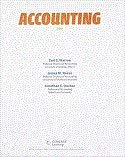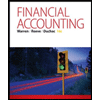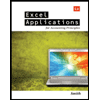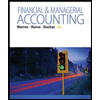
1.
Bonds: Bonds are long-term promissory notes that are represented by a company while borrowing money from investors to raise fund for financing the operations.
Bonds Payable: Bonds payable are referred to long-term debts of the business, issued to various lenders known as bondholders, generally in multiples of $1,000 per bond, to raise fund for financing the operations.
Premium on bonds payable: It occurs when the bonds are issued at a high price than the face value.
Straight-line amortization method: It is a method of bond amortization that spreads the amount of the bond discount equally over the interest period.
To prepare:
1.
Explanation of Solution
Prepare journal entry for cash proceeds from the issuance of the bonds on July 1, 2016.
| Date | Account Title and Explanation | Post Ref | Debit ($) | Credit ($) | |||
| 2016 | Cash | 66,747,178 | |||||
| July | 1 | Premium on Bonds Payable (1) | 4,247,178 | ||||
| Bonds Payable | 62,500,000 | ||||||
| (To record issue of bonds at premium) | |||||||
Table (1)
Working note:
Calculate premium on bonds payable.
- Cash is an asset and it is increased. So, debit it by $66,747,178.
- Premium on Bonds Payable is an adjunct liability account and it is increased. So, credit it by $4,247,178.
- Bonds payable is a liability and it is increased. So, credit it by $62,500,000.
2 (a)
To prepare: Journal entry to record first semiannual interest payment and amortization of bond premium on December 31, 2016.
2 (a)
Explanation of Solution
Prepare journal entry for first semiannual interest payment and amortization of discount on bonds.
| Date | Account Title and Explanation | Post Ref | Debit ($) | Credit ($) | |||
| 2016 | Interest Expense (4) | 2,600,141 | |||||
| December | 31 | Premium on Bonds Payable (2) | 212,359 | ||||
| Cash (3) | 2,812,500 | ||||||
| (To record first semiannual payment of interest on bonds) | |||||||
Table (2)
Working notes:
Calculate premium on bonds payable semiannually.
Calculate the amount of cash interest.
Calculate the interest expense on the bond.
- Interest expense is an expense and it decreases the equity value. So, debit it by $2,600,141.
- Premium on Bonds Payable is an adjunct liability account and it is decreased. So, debit it by $212,359.
- Cash is an asset and it is decreased. So, credit it by $2,812,500.
2 (b)
To prepare: Journal entry to record second interest payment and amortization of bond discount on June 30, 2017.
2 (b)
Explanation of Solution
Prepare journal entry for second interest payment and amortization of discount on bonds.
| Date | Account Title and Explanation | Post Ref | Debit ($) | Credit ($) | |||
| 2017 | Interest Expense (7) | 2,600,141 | |||||
| June | 30 | Premium on Bonds Payable (5) | 212,359 | ||||
| Cash (6) | 2,812,500 | ||||||
| (To record second semiannual payment of interest on bonds) | |||||||
Table (3)
Working notes:
Calculate premium on bonds payable semiannually.
Calculate the amount of cash interest.
Calculate the interest expense on the bond.
- Interest expense is an expense and it decreases the equity value. So, debit it by $2,600,141.
- Premium on Bonds Payable is an adjunct liability account and it is decreased. So, debit it by $212,359.
- Cash is an asset and it is decreased. So, credit it by $2,812,500.
3.
The amount of total interest expense for 2016.
3.
Explanation of Solution
Determine the amount of total interest expense for 2016.
Hence, the amount of total interest expense for 2016 is $2,600,141.
4.
To explain: The situation when contract rate of bond is greater than the market rate of interest.
4.
Explanation of Solution
Yes, the bond proceeds will always be greater than the face amount of bonds when the contract interest rate is greater than the market interest rate.
If the stated interest rate of a bond is greater than the market interest rate, then the bonds is issued at premium. This is because the bonds is more valuable in market and investors is ready to pay more than the maturity
5.
To calculate: The amount of cash proceeds (present value) from the sale of the bonds using present value tables.
5.
Explanation of Solution
Determine the amount of cash proceeds (present value) from the sale of the bonds.
Step 1: Calculate the semiannual interest on bonds.
Step 2: Calculate the present value of interest.
| Particulars | Amount |
| Interest payment (a) | $2,812,500 |
| PV factor at semiannual market interest rate of 4% for 20 periods (b) | 13.59033 |
Present value [(a) × (b)] |
$38,222,802 |
Table (4)
Note: Refer Appendix A in the text book for present value factor.
Step 3: Calculate the present value of lump sum payment of $62,500,000 (principal amount) at 4% for 20 periods.
| Particulars | Amount |
| Single payment (a) | $62,500,000 |
| PV factor at semiannual market interest rate of 4% for 20 periods (b) | 0.45639 |
Present value [(a) × (b)] |
$28,524,375 |
Table (5)
Note: Refer Appendix A in the text book for present value factor.
Step 4: Calculate the amount of cash proceeds from the sale of the bonds.
Thus, the amount of cash proceeds from the sale of the bonds is $66,747,178
Want to see more full solutions like this?
Chapter 14 Solutions
Custom Bundle: Accounting, Loose-leaf Version, 26th + Working Papers, Chapters 1-17, 26th Edition
- No chatgpt correct solution.arrow_forwardNeed soln this No AIarrow_forwardWalsh plc sells wash machines and provides a one-year warranty against faults occurring after sale. Platt estimates that if all goods under warranty at its statement of financial position date of 31 December 2022 need minor repairs the total cost would be £ 6 million. If all the products under warranty needed minor repairs the total cost would be £ 24 million. At 31 December 2023 these amounts have risen to £ 7 million and £ 26 million respectively. Based on previous years` experience, Walsh estimates that the 80% of the products will require no repairs, 18% will require minor repairs and 2% will require major repairs. During the year ended 31 December 2023 actual costs of repair under the warranty amounted to £ 1,400,000. Required: a. b. What are the distinctions between liabilities, provisions and contingent liabilities under IAS 37 “Provisions”? Explain the accounting treatment of the warranty in Walsh plc`s financial statements for the year ended 31 December 2023, qualifying…arrow_forward
 Financial AccountingAccountingISBN:9781305088436Author:Carl Warren, Jim Reeve, Jonathan DuchacPublisher:Cengage LearningPrinciples of Accounting Volume 1AccountingISBN:9781947172685Author:OpenStaxPublisher:OpenStax College
Financial AccountingAccountingISBN:9781305088436Author:Carl Warren, Jim Reeve, Jonathan DuchacPublisher:Cengage LearningPrinciples of Accounting Volume 1AccountingISBN:9781947172685Author:OpenStaxPublisher:OpenStax College Excel Applications for Accounting PrinciplesAccountingISBN:9781111581565Author:Gaylord N. SmithPublisher:Cengage Learning
Excel Applications for Accounting PrinciplesAccountingISBN:9781111581565Author:Gaylord N. SmithPublisher:Cengage Learning Financial Accounting: The Impact on Decision Make...AccountingISBN:9781305654174Author:Gary A. Porter, Curtis L. NortonPublisher:Cengage Learning
Financial Accounting: The Impact on Decision Make...AccountingISBN:9781305654174Author:Gary A. Porter, Curtis L. NortonPublisher:Cengage Learning Financial & Managerial AccountingAccountingISBN:9781285866307Author:Carl Warren, James M. Reeve, Jonathan DuchacPublisher:Cengage Learning
Financial & Managerial AccountingAccountingISBN:9781285866307Author:Carl Warren, James M. Reeve, Jonathan DuchacPublisher:Cengage Learning Cornerstones of Financial AccountingAccountingISBN:9781337690881Author:Jay Rich, Jeff JonesPublisher:Cengage Learning
Cornerstones of Financial AccountingAccountingISBN:9781337690881Author:Jay Rich, Jeff JonesPublisher:Cengage Learning





